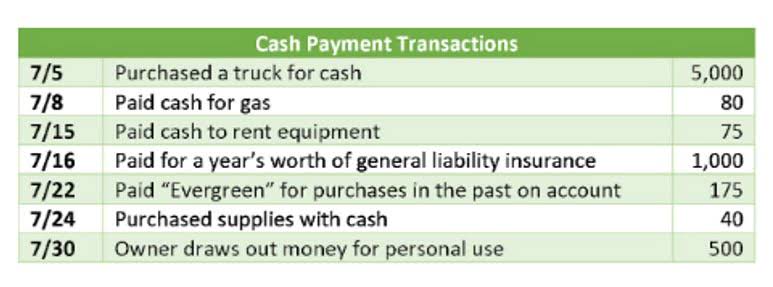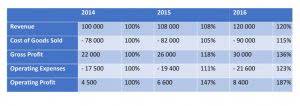How to Identify and Correct Bookkeeping Cleanup Errors?

Compile your billing receipts, expense reports, bank statements, and payroll accounts. Once all documents are present, begin working on sorting out the billing. Make copies of all your receipts and invoices and keep them in a digital file that is always accessible when you are away from the office. Also, ensure your account names accurately reflect your current business needs, making it easier to track finances and understand transactions at a glance. Simplifying and standardizing your chart of accounts creates a more organized system that saves you time and minimizes confusion moving forward. This bookkeeping clean up checklist is where you review all accounts (like income statements and balance sheets).
Review current accounting methods

If you do not reconcile your books with your external account balances (for example, a bank account), you will end up with bad books. Reviewing older accounts and possibly reclassifying transactions to fit your current system could be part of a more thorough clean up. Make sure that your records are correct by updating any information that is no longer valid, like customer or vendor data. The easiest way to wrap up one fiscal year and get ready for the next is with a systematic approach to getting your books organized. Follow these simple steps and bring your CPA the cleanest set of books you ever had.
- You can find these types of errors by double-checking your work and preparing trial balances at the end of each reporting period.
- Adjusting entries can be a little more technical than what most small business owners should be expected to do.
- Our checklist template will guide your team through every step of the cleanup process, minimizing errors and ensuring a thorough review of all financial data.
- Organizing financial records is the first step in preparing for year-end bookkeeping activities.
Assess Accounts Payable and Receivable

You can find these types of errors by double-checking your work and preparing trial balances at the end of each reporting period. Here are some free templates created by other bookkeeping and accounting professionals that will assist you in your bookkeeping cleanup. Reconcile tax liabilities in the accounting software with amounts paid and any outstanding balances. Resolve these inaccuracies with the client and update the records accordingly. If you notice missing records, collaborate with your client to gather and document them.
Single Touch Payroll – Are you compliant?
- Unearth any unpaid bills to ensure they get processed in the correct accounting period before you close out your year.
- Most fledgling businesses keep records of when they receive cash from sales or spend cash to cover bills, and leave it at that.
- Our team of skilled bookkeepers and accountants is ready to tackle any client’s bookkeeping clean up with expertise and efficiency.
- The best way to manage this regularly is to do a monthly reconciliation to identify any mismatched or missing transactions.
- Disorganization in your company’s accounting and bookkeeping can have disastrous consequences, actively encouraging expensive dysfunction and likely causing costly delays.
- Now that the source of the problems has been discovered, the next best step is to assess the damage and ensure no other mistakes are present.
This step is crucial to getting accurate information for your financial reports. Review past transactions to check that they were categorized correctly, as well as update those that have not yet been categorized. Getting ready to do bookkeeping cleanup sounds intimidating, but can be done effectively by systematically working through these steps to gather the information you need. Once you’ve cleaned your bookkeeping, your business will be better prepared for growth, tax season, and investment bookkeeping opportunities. Now that we’ve covered the basics let’s look at the step-by-step process for performing a bookkeeping cleanup. Following this clear and structured process will save time, reduce errors, and ensure the best outcome.
- Check your inventory status on a month-to-month basis to avoid being caught off guard by a shortage in supplies.
- They can also help you organize and manage your team’s tasks by creating checklists, assigning responsibilities, and tracking deadlines in real-time.
- To avoid any fines or interest costs, it’s crucial to constantly verify your tax files.
- Compare the cleaned-up books with previous versions to identify improvements and ensure past errors have been corrected.
- Organize payroll tax documentation, including employee withholdings and employer tax contributions, to avoid compliance issues.
- They may help you find any missing information from all of your electronic transactions.
Regularly evaluate the process to identify software solutions that can enhance efficiency and reduce inconvenience. Contemporary software can scan invoices and directly import accounts payable information into different software platforms. Financial institutions provide the option to access bank feeds, which enable the direct importation of the majority of transactions. After confirming that you have gathered all the necessary information for your accounting process, input (or import) your clients’ data into your accounting software. Bank statements are the basic records for account books and are crucial to the bookkeeping clean-up checklist.

That said, we recommend working with an experienced professional for optimal Car Dealership Accounting results! Below we offer a bookkeeping cleanup checklist for startups and small business owners that aren’t sure where to begin. Just like with bank reconciliation, ensure your credit card statements align with your small business bookkeeping records. The process is similar, involving matching transactions on your credit card statement to corresponding entries in your accounting system. Whether your business is well-established or in the early phases of pre-seeding, keeping detailed, organized financial records is essential for the financial health of the organization.

If you’re having trouble remembering, make a note of the due date for each transaction. Your vendors only trust you as much as you are forthcoming with your payments. Hence, check all your vendor invoices and check if you’ve missed any payments.
